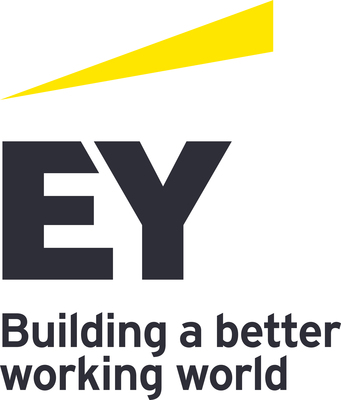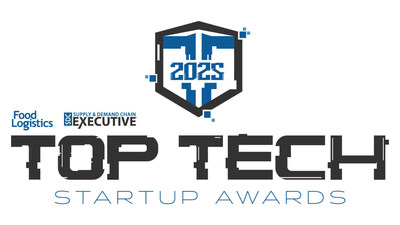Global medtech industry resets to pre-pandemic norms as digitalization accelerates
Press Releases
Oct 09, 2023
- Revenue growth decline: Post-COVID-19 corrections and macroeconomic conditions contributed to the lowest revenue growth rate since 2015, but the industry’s R&D investments remained strong.
- Public valuations for medtechs resetting: Roughly half of medtech stock price gains realized in 2021 were wiped out by mid-2022 and remained flat through mid-2023.
- Medtech growth outlook: Technology advances — including breakthrough generative AI models — will likely accelerate sector growth, especially when combined with demand for patient-centered, personalized care.
NEW YORK, Oct. 9, 2023 /PRNewswire/ — Over the past 12 months, the global medical technology (medtech) industry experienced a reset with performance largely returning to pre-pandemic norms, as described in the 17th annual Pulse of the Industry report produced by Ernst & Young LLP (EY US).
“The post-pandemic headwinds impacting medtech intensified in 2022 and the first half of 2023, with pressures coming from macro factors such as inflation, high cost of capital, market volatility, regulatory changes and a slow M&A environment,” says Arda Ural, PhD, EY Americas Industry Markets Leader, Health Sciences and Wellness. “Once the macro environment stabilizes, the breakthrough AI and digital technologies have the potential to dramatically revitalize and reshape the industry for years to come.”
Pulse of the Industry captures the current state of the US and European medtech industry, as expressed in financial performance, spending trends, M&A, R&D and other measures. The report also offers commentary on four key questions that medtech executives should heed as they develop future strategies:
- How can medtech restore its growth trajectory?
- How can the industry attract investors, particularly in a period of continued uncertainty?
- How can medtech invest in activities that will drive strategic growth?
- How can medtech help secure the health and investment levels of the broader innovation ecosystem?
“Although medtechs have been grappling with a tumultuous global economy, they were able to deliver an impressive cash return to investors in 2022,” says Jim Welch, EY Global MedTech Leader. “Even with looming questions on the impact of newer GLP-1 therapies, the industry has skillfully navigated macro supply chain challenges. I’m optimistic that medtechs are poised for growth, centered on a patient-centric health care ecosystem built on novel technologies that just a few years ago seemed too futuristic.”
As detailed in the report, medtech experienced a slowdown in 2022 to reach its lowest revenue growth level since 2015. Total revenue reached US$573 billion, as growth fell from a post-pandemic high of 16% in 2021 to just 3.5% in 2022. Consequently, public valuations fell in parallel with top-line growth. Stock prices for medtech, as with broader indexes, peaked toward the end of 2021. But by midyear 2022, roughly half of the medtech stock price gains made during the pandemic had been wiped out and remained flat through midyear 2023.
However, in 2022, medtechs rewarded their investors with US$27.8 billion in dividends and buybacks. M&A expenditure, on the other hand, fell 44%, a steep decline in inorganic growth investment.
Other key findings include:
- Commercial leaders (public medtechs with at least US$500 million in revenue) saw their top lines grow nearly 6% in 2022, but this same group saw a year-over-year decline of 1.1% from the first half of 2023 compared with the first half of 2022.
- Though medtech’s R&D investment reached a record US$24.7 billion in 2022, the 8% increase broke a three-year streak of double-digit R&D spending growth, but the percentage increase more than doubled the revenue growth rate.
- In 2022, there were nearly 3,200 510(k) clearances in the US for medical devices — the highest figure the industry has seen since 2017. However, 2022 saw just 22 premarket approvals (PMAs), the lowest over the last decade. 2023 appears to be back on track to reach the highest PMA levels since 2017, with 20 approvals seen through the first half of the year.
- Medtech financing grew to a total of US$32.8 billion in the 12-month period ending June 30, 2023, a 9% increase over the previous period and the first overall uptick in three years. Driving most of the growth was a 71% increase in the amount of debt issued, which reached US$19 billion.
- US$6.7 billion of venture capital was raised in the 12-month period ending June 30, 2023, the lowest figure seen in seven years. There were 106 venture rounds of US$5 million or more, also the lowest amount in eight years.
- US$40 million was raised via initial public offering in the 12-month period ending June 30, 2023, as only four companies went public. This was down from the combined US$11.7 billion raised the previous two Pulse cycles.
Despite overarching challenges, favorable growth potential appears likely on the horizon in the form of artificial intelligence (AI), data analytics and other rapidly evolving technologies that are reshaping many industries. Consumer demand for more personalized and convenient health care, pressure to change payment models due to aging populations and a rise in chronic disease incidence are long-term trends that pose significant implications for the industry.
The report also reintroduces the intelligent health ecosystem (IHE), a blueprint for the future direction of life sciences and a technology-driven reinvention of the sector. The IHE is envisioned as a smart, connected, personalized, patient-centered health care model reliant on generative AI and other innovations. Within the IHE, these rising technologies will ultimately converge, forming a smart infrastructure for care delivery anytime and anywhere, beyond legacy institutional care channels.
To read Pulse of the Industry, visit ey.com/pulse.
About EY
EY exists to build a better working world, helping create long-term value for clients, people and society and build trust in the capital markets.
Enabled by data and technology, diverse EY teams in over 150 countries provide trust through assurance and help clients grow, transform and operate.
Working across assurance, consulting, law, strategy, tax and transactions, EY teams ask better questions to find new answers for the complex issues facing our world today.
EY refers to the global organization, and may refer to one or more, of the member firms of Ernst & Young Global Limited, each of which is a separate legal entity. Ernst & Young Global Limited, a UK company limited by guarantee, does not provide services to clients. Information about how EY collects and uses personal data and a description of the rights individuals have under data protection legislation are available via ey.com/privacy. EY member firms do not practice law where prohibited by local laws. For more information about our organization, please visit ey.com.
About EY Health Sciences and Wellness
The rise of the empowered consumer, coupled with technology advancements and the emergence of digitally focused entrants, is changing every aspect of health and care delivery. To retain relevancy in today’s digitally focused, data-infused ecosystem, all participants in health care today must rethink their business practices, including capital strategy, partnering and the creation of patient-centric operating models.
The EY Health Sciences and Wellness architecture brings together a worldwide network of 34,000 professionals to build data-centric approaches to customer engagement and improved outcomes. We help our clients deliver on their strategic goals, design optimized operating models and form the right partnerships so they may thrive today and succeed in the health systems of tomorrow. We work across the ecosystem to understand the implications of today’s trends, proactively finding solutions to business issues and to seize the upside of disruption in this transformative age.
![]() View original content to download multimedia:https://www.prnewswire.com/news-releases/global-medtech-industry-resets-to-pre-pandemic-norms-as-digitalization-accelerates-301949923.html
View original content to download multimedia:https://www.prnewswire.com/news-releases/global-medtech-industry-resets-to-pre-pandemic-norms-as-digitalization-accelerates-301949923.html
SOURCE EY




